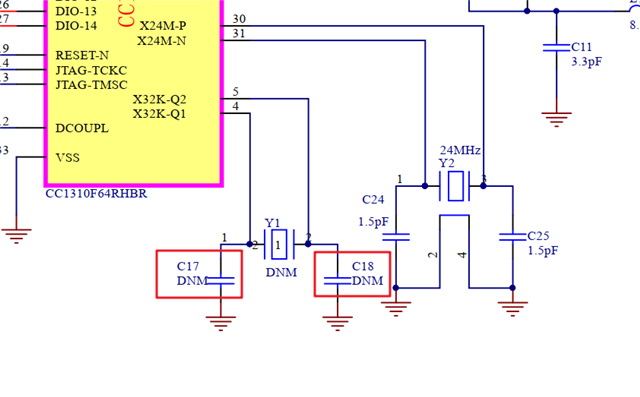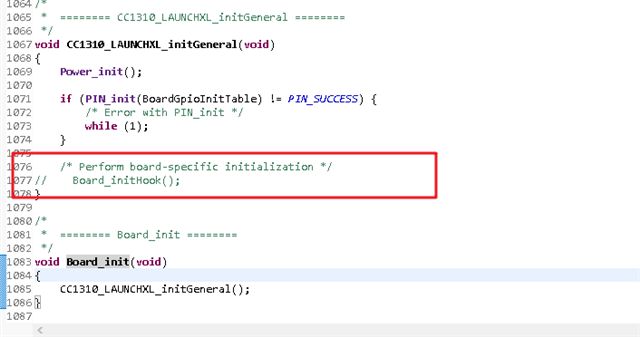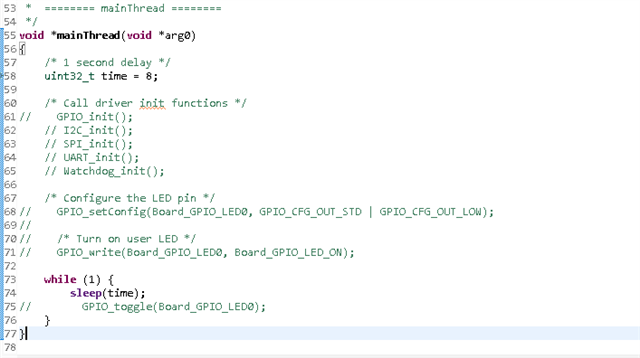Other Parts Discussed in Thread: , CC2640
Hi team ,
The customer found that as long as the external low-speed crystal oscillator is short-circuited for a period of time during sleep, the external crystal oscillator will stop. As shown in the picture, short-circuit one of the capacitors on both sides of the crystal.

The customer also did the same test on the development board LAUNCHXL-CC1310 and found that the development board also had this phenomenon.
Directly import the empty project of simplelink_cc13x0_sdk_4_20_02_07 (simplelink_cc13x0_sdk_4_20_02_07\examples\rtos\CC1310_LAUNCHXL\drivers\empty).
On this basis, block the Board_initHook, block the IO20 of the initialization pin, block some GPIO operations, and change the sleep time to 8S.
Then I tested it on both our own board and development board, and both had this phenomenon.



Thanks & Best regards,
Yolande


